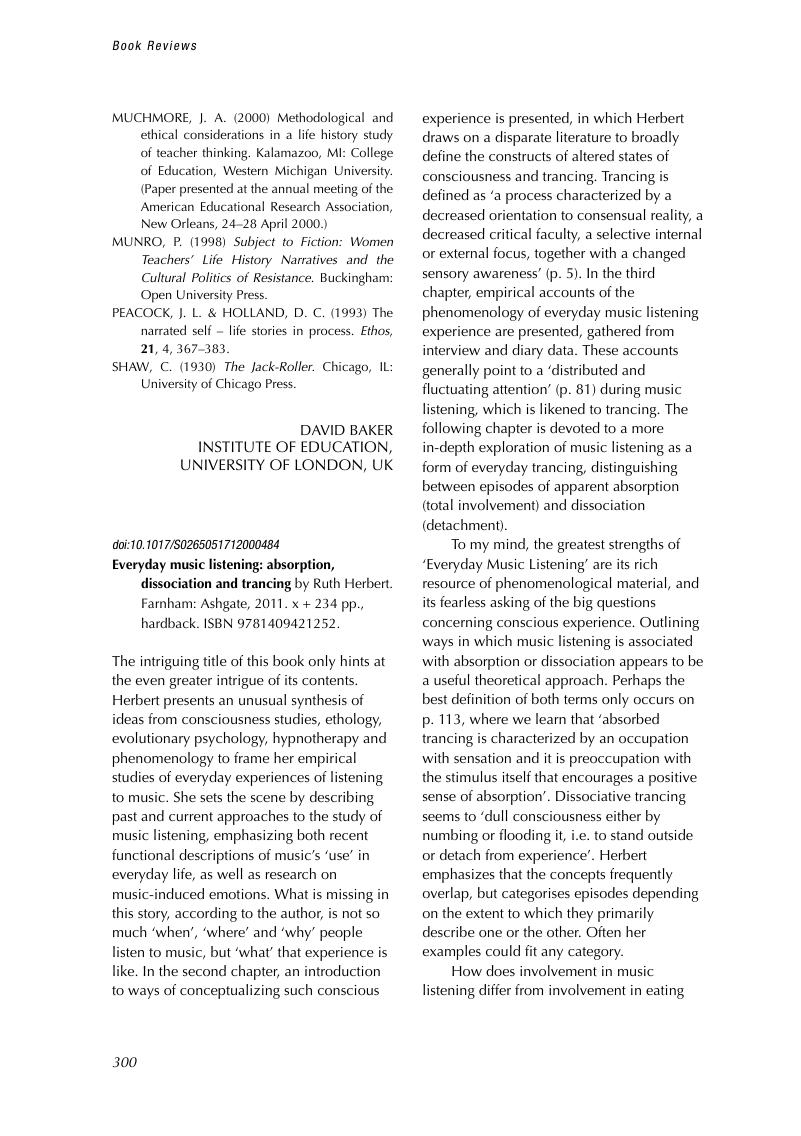No CrossRef data available.
Article contents
Everyday music listening: absorption, dissociation and trancing by Ruth Herbert. Farnham: Ashgate, 2011. x + 234 pp., hardback. ISBN 9781409421252.
Published online by Cambridge University Press: 08 January 2013
Abstract
An abstract is not available for this content so a preview has been provided. Please use the Get access link above for information on how to access this content.

- Type
- Book Review
- Information
- Copyright
- Copyright © Cambridge University Press 2013
References
BAILES, F. (2006) The use of experience-sampling methods to monitor musical imagery in everyday life. Musicae Scientiae, 10, 173–190.Google Scholar
BAILES, F. (2007) The prevalence and nature of imagined music in the everyday lives of music students. Psychology of Music, 35, 555–570.Google Scholar
BEAMAN, C. P. & WILLIAMS, T. I. (2009) Earworms (‘stuck song syndrome’): Towards a natural history of intrusive thoughts. British Journal of Psychology, 101, 637–653.Google Scholar
JUSLIN, P. N. & VÄSTFJÄLL, D. (2008) Emotional responses to music: The need to consider underlying mechanisms. Behavioral and Brain Sciences, 31, 559–621.Google Scholar
LIIKKANEN, L. A. (2012) Musical activities predispose to involuntary musical imagery. Psychology of Music, 40, 236–256.Google Scholar




